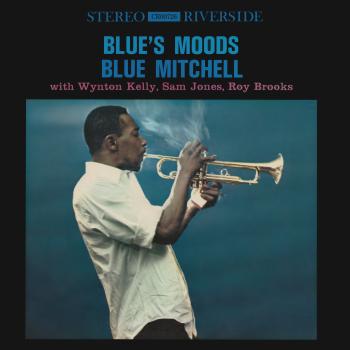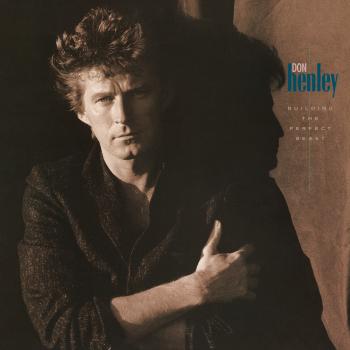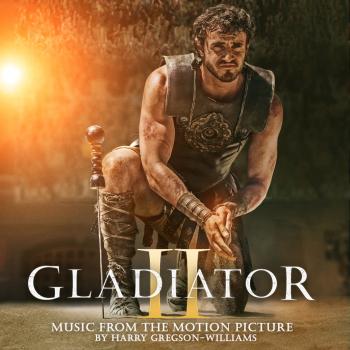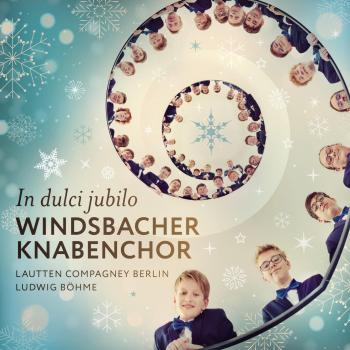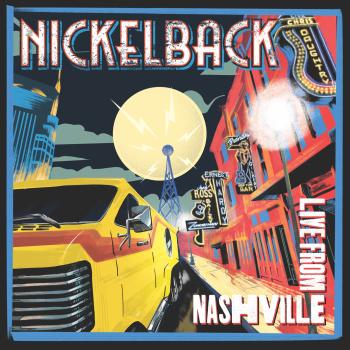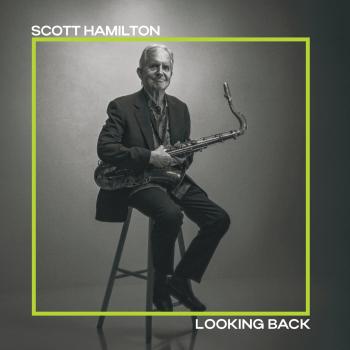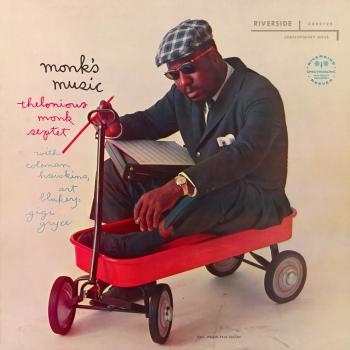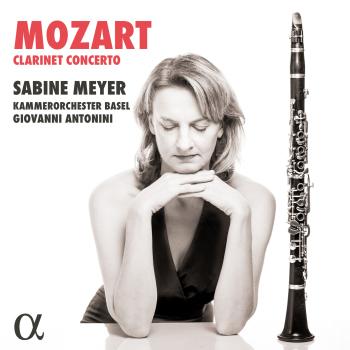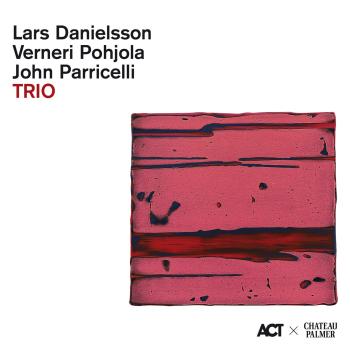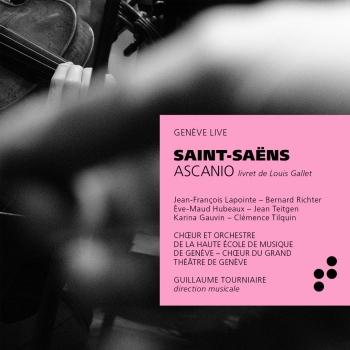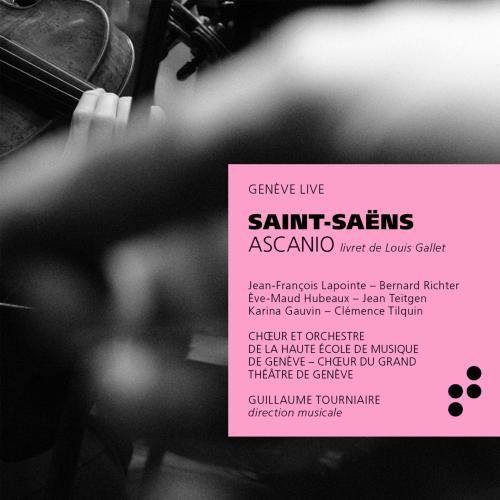
- Camille Saint-Saëns (1835 - 1921): Ascanio, Acte I Scène 1, Tableau 1:
- 1 "Très bien !" (Genève Live) 04:42
- Ascanio, Acte I Scène 2, Tableau 1:
- 2 "Reste, Ascanio !" (Genève Live) 02:27
- 3 "Si loin et si haut..." (Genève Live) 02:05
- Ascanio, Acte I Scène 3, Tableau 1:
- 4 "Maître !" (Genève Live) 02:20
- 5 "Jaloux de tout !" (Genève Live) 02:39
- 6 "Allons ! Souriez, chère belle !" (Genève Live) 01:51
- Ascanio, Acte I Scène 4 , Tableau 1:
- 7 "Le Roi ! Voici le Roi !" (Genève Live) 00:47
- 8 "Bonjour ! Benvenuto !" (Genève Live) 02:02
- 9 Ascanio, Acte I Scène 4 , Tableau 1:"Ascanio !" (Genève Live) 02:47
- 10 "Avant ce jour ai-je jamais aimé ?" (Genève Live) 00:38
- 11 "Voilà le pur chef-d'œuvre, ami !" (Genève Live) 02:34
- 12 J'attends l'Empereur Charles-Quint... " (Genève Live) 00:58
- 13 "Vous serez obéi, Sire !" (Genève Live) 01:19
- Ascanio, Acte I Scène 1, Tableau 2:
- 14 "Quand nous serons devenus goutteux" (Genève Live) 02:23
- Ascanio, Acte I Scène 2, Tableau 2:
- 15 "Pardonnez-moi, mademoiselle" (Genève Live) 02:49
- 16 "La charité, ma belle dame !" (Genève Live) 03:04
- 17 "Allez pourtant, mes chers enfants" (Genève Live) 03:15
- Ascanio, Acte I Scène 3, Tableau 2:
- 18 "Ah ! La plaisante audace !" (Genève Live) 01:22
- Ascanio, Acte I Scène 4, Tableau 2:
- 19 "Voilà l'envahisseur !" (Genève Live) 03:04
- Ascanio, Acte I Scène 5, Tableau 2:
- 20 "C'est elle !" (Genève Live) 01:18
- 21 "Jeanne, je te l'ai dit..." (Genève Live) 00:50
- Ascanio, Acte I Scène 7, Tableau 2:
- 22 "Il ne faut pas..." (Genève Live) 01:53
- Ascanio, Acte I Scène 8, Tableau 2:
- 23 "Il est deux nobles cœurs" (Genève Live) 04:06
- Ascanio, Acte I Scène 9, Tableau 2:
- 24 "La divine enfant !" (Genève Live) 03:15
- Ascanio, Acte I Scène 10, Tableau 2:
- 25 "Amis, bonjour !" (Genève Live) 01:26
- 26 "D'Estourville ! D'Estourville !" (Genève Live) 02:57
- Ascanio, Acte II Scène 1, Tableau 3:
- 27 "Frappe! Cogne !" (Genève Live) 01:54
- 28 "La la la la... Fiorentinelle !" (Genève Live) 02:50
- 29 "Pourquoi vous taisez-vous ?" (Genève Live) 02:17
- 30 "À l'ombre des noires tours..." (Genève Live) 03:07
- Ascanio, Acte II Scène 2, Tableau 3:
- 31 "L'Empereur Charles-Quint, arrivé ce matin..." (Genève Live) 02:29
- Ascanio, Acte II Scène 3, Tableau 3:
- 32 "Ah ! Le destin va-t-il réaliser mon rêve ?" (Genève Live) 02:27
- 33 "Mon cœur est sous la pierre..." (Genève Live) 01:21
- 34 "O douce Hébé..." (Genève Live) 03:33
- Ascanio, Acte II Scène 4, Tableau 3:
- 35 "Qui vient ?" (Genève Live) 02:14
- 36 "Pour avoir connu trop d'ivresses..." (Genève Live) 02:48
- Ascanio, Acte II Scène 5 Tableau 3:
- 37 "Un message du Roi" (Genève Live) 02:31
- Ascanio, Acte II Scène 4, Tableau 3:
- 38 "O beauté, j'ai compris ta puissance !" (Genève Live) 01:00
- Ascanio, Acte II Scène 6, Tableau 3:
- 39 "Qu'est-ce donc ?" (Genève Live) 01:14
- 40 "Colombe !" (Genève Live) 01:40
- Ascanio, Acte II Scène 1, Tableau 4:
- 41 "Je suis votre féal !" (Genève Live) 01:51
- 42 "Adieu, beauté, ma mie, ma vie !" (Genève Live) 05:27
- Ascanio, Acte II Scène 2, Tableau 4:
- 43 "Quelle folle chimère..." (Genève Live) 01:00
- Ascanio, Acte II Scène 3, Tableau 4:
- 44 "Vous ? Ascanio !" (Genève Live) 02:05
- 45 "J'ai fait un rêve enchanteur" (Genève Live) 01:25
- 46 "Quand l'amour vous protège" (Genève Live) 02:02
- Ascanio, Acte II Scène 4, Tableau 4:
- 47 "Ah ! Vous voilà venue à propos" (Genève Live) 02:19
- 48 "Ah ! Me taire... je ne le puis" (Genève Live) 01:42
- 49 "Que mon âme ravie..." (Genève Live) 02:10
- Ascanio, Acte III Tableau 5:
- 50 "Gloire au Roi François !" (Genève Live) 02:12
- 51 "Pardonnez-moi, mon frère" (Genève Live) 02:57
- 52 "Sire, écoutez-moi !" (Genève Live) 01:40
- 53 "Va ! La revanche est prête" (Genève Live) 01:13
- 54 "Allez, mon frère, allez" (Genève Live) 01:04
- 55 "Gloire au Roi François !" (Genève Live) 01:25
- Ascanio, Acte III, "Ballet" Divertissement:
- 56 No. 1: Entrée du Maître des Jeux (Genève Live) 01:18
- 57 No. 2: Vénus, Junon et Pallas (Genève Live) 00:55
- 58 No. 3: Diane, Dryades et Naïades (Genève Live) 01:55
- 59 No. 4: Bacchus et les Bacchantes (Genève Live) 01:24
- 60 No. 5: Apparition de Phœbus, d'Apollon et les neuf Muses (Genève Live) 02:45
- 61 No. 6: Phœbus prenant sa lyre, évoque l'Amour (Genève Live) 03:23
- 62 No. 7: L'Amour fait apparaître Psyché (Genève Live) 02:33
- 63 No. 8: Ensemble de Phœbus, Diane, Erigone, Nicœa et Bacchus avec les Muses, les Nymphes et les Bacchantes (Genève Live) 02:04
- 64 No. 9: Variation de l'Amour (Genève Live) 01:34
- 65 No. 10: Le Dragon des Hespérides apporte la pomme d'or (Genève Live) 01:29
- 66 No. 11: Final. Les Déesses, Bacchantes, Naïades et Dryades (Genève Live) 03:28
- 67 No. 12: Apothéose (Genève Live) 01:37
- Ascanio, Acte IV Scène 1, Tableau 6:
- 68 "Sommes-nous seuls ?" (Genève Live) 02:07
- 69 "Tu sais mon désir" (Genève Live) 03:16
- Ascanio, Acte IV Scène 2, Tableau 6:
- 70 "Hélas, ah ! ma douleur soutiendra ma colère !" (Genève Live) 00:37
- Ascanio, Acte IV Scène 3, Tableau 6:
- 71 "Ah ! Te voilà donc revenue !" (Genève Live) 02:04
- Ascanio, Acte IV Scène 4, Tableau 6:
- 72 "Inclinez-vous, mon lis" (Genève Live) 02:58
- 73 "En ton amour ma foi profonde..." (Genève Live) 02:23
- 74 "Ah ! Je veux tout lui dire !" (Genève Live) 00:50
- Ascanio, Acte IV Scène 4, Tableau 6:
- 75 "Enfants, je ne vous en veux pas !" (Genève Live) 02:16
- 76 "O bonté profonde" (Genève Live) 02:17
- 77 "O cœur pur, généreux et fort !" (Genève Live) 02:37
- 78 "Ouvrez au nom du Roi !" (Genève Live) 01:52
- Ascanio, Acte IV Scène 5, Tableau 6:
- 79 "Ouvre à présent !" (Genève Live) 04:10
- Ascanio, Acte IV Scène 5, Tableau 6:
- 80 "Mais ce n'est pas mon deuil" (Genève Live) 02:29
- Ascanio, Acte V Scène 1, Tableau 7:
- 81 Introduction (Genève Live) 02:33
- 82 "Trois jours ! Tout est fini !" (Genève Live) 03:34
- Ascanio, Acte V Scène 2, Tableau 7:
- 83 "Dans la splendeur impérissable" (Genève Live) 01:53
- 84 "Benvenuto, ton œuvre est accomplie !" (Genève Live) 03:02
- 85 "O force immense du génie !" (Genève Live) 02:22
- Ascanio, Acte V Scène 2, Tableau :
- 86 "Si Colombe est vivante, ah ! Qui donc est là, morte ?" (Genève Live) 02:42
Info for Ascanio (Genève Live)
Gelungene Mischung: Saint-Saëns als Opernkomponist konnte man bis vor kurzem auf Tonträger fast ausschließlich anhand von Samson et Dalila erleben. Dank der engagierten Stiftung Bru Zane wächst die Diskographie der Saint-Saëns-Opern allerdings seit einiger Zeit erfreulich. Hier können wir seine 1890 uraufgeführte Oper Ascanio entdecken. Das Werk um den genialen Renaissancekünstler Benvenuto Cellini ist eine echte Entdeckung und zeichnet sich durch eine gelungene Mischung aus italienischem Lyrismus, wagnerischen Einflüssen und französischer Eleganz aus. Die grandiose Produktion aus Genf (u. a. mit Karina Gauvin) stützt sich auf das Autograph der Urfassung von 1888.
Jean-Francois Lapointe, Bariton (Benvenuto Cellini)
Bernard Richter, Tenor (Ascanio)
Eve-Maud Hubeaux, Mezzosopran (Scozzone)
Jean Teitgen, Bass (François 1er)
Karina Gauvin, Sopran (La Duchesse d’Étampes)
Clemence Tilquin, Sopran (Colombe d’Estourville)
Choeur et Orchestre de la Haute Ecole de Musique de Geneve
Choeur du Grand Theatre de Geneve
Guillaume Tourniaire, Leitung
Guillaume Tourniaire
Brilliant French conductor Guillaume Tourniaire is currently enjoying a meteoric rise onto the international conducting stage. Born in Provence, Guillaume Tourniaire studied piano and conducting at the Geneva Conservatory, during which time he was winner of a first prize in the international Gabriel Fauré piano competition. His professional career started as artistic director of the vocal ensemble, Le Motet de Genève from 1993, Chorusmaster at the Grand Théâtre de Genève from 1996, and choir director of the Teatro la Fenice in Venice from 2001–2002. This early apprenticeship has given him a rare depth and experience with the opera and vocal repertoire, and this combined with his talent and passion for rare and previously unperformed music, has made him a highly sought after conductor on the world stage.
Tourniaire made his conducting debut in 1998, at the Grand Théâtre de Genève, in its production of Prokofiev’s opera Betrothal in a Monastery. He then appeared at the Opéra National de Paris, conducting Stravinsky’s ballet, Le Sacre du Printemps. He subsequently established a collaboration with the Orchestre de la Suisse Romande in Geneva conducting such works as the world premiere of the complete original version of Prokofiev’s music for the Eisenstein film, Ivan the Terrible—based on Tourniaire’s own reconstruction, Mozart´s incidental music for the drama of Tobias Philipp Gebler, Thamos, König in Ägypten; Prokofiev's cantata, Alexander Nevsky; Bohuslav Martinů´s oratorio, Gilgamesh; Jean-Michel Damase’s Madame de.; and Janáček’s Amarus and The Eternal Gospel. He made his Opera Australia debut in 2010 with Bizet’s Carmen.
He has conducted The Helsinki Philharmonic, the Orchestre National de France, the Orchestra of Teatro La Fenice, Venice, the Orchestra della Regione Toscana in Florence, the Orchestra dell’Accademia di Santa Cecilia in Rome, the Teatro Rendano in Cosenza, the Teatro Sao Carlos in Lisbon, the Sferisterio Opera Festival in Macerata, the Lausanne Chamber Orchestra, the Deutsche Oper in Düsseldorf, the Stadttheater in Osnabrück, the Geneva Chamber Orchestra, the Deutsche Kammerphilharmonie in Bremen, the Ensemble Vocal et Instrumental de Lausanne, the Teatro Politeama Greco in Lecce, the Teatro Politeama in Catanzaro, the Teatro Cilea in Reggio di Calabria, the Atelier Lyrique de l’Opéra National de Paris, the Camerata Antiqua in Seoul, the Teatro Lirico in Cagliari, the Orchestre National de Lyon, the Warsaw Polish Radio Orchestra, the Dijon Opera, the Hermitage Orchestra in Saint-Petersburg and the Mozarteum Orchestra in Salzburg.
Choeur et Orchestre de la Haute Ecole de Musique de Geneve
In 2006 he made his debut at the Prague State Opera, conducting Bernstein’s Candide, and became the company’s Musical Director in 2007. In 2012 he was appointed Artistic Director of Ensemble Vocal Lausanne.
For Melba Guillaume Tourniaire has recorded five acclaimed CDs: the world premieres of two works by Saint-Saëns, his opera Hélène and Nuit persane; the Mozart clarinet concerto with Paul Dean and the QSO; Turbulent Heart, music of Louis Vierne and Ernest Chausson with Steve Davislim and the QSO; Elan: ballet music from Saint-Saëns’ operas and Pure Diva: Cheryl Barker’s Tribute to Joan Hammond, with the QSO.
The HEM Grand Choir is one of the school’s permanent ensemble, which aims to offer group training to about a hundred students from all the school’s disciplines. These are mainly pianists, organists and guitarists, but also students from the theoretical departments and the Music and Movement Department, as well as a number of singers.
As one of the projects in the ‘artistic community’ formed by all those involved in the school’s musical life – students, teachers and guest artists – the Grand Choir initiates independent artistic projects and takes part in artistic productions by such institutions as the Orchestre de la Suisse romande and the Geneva Chamber Orchestra. It also takes part in major projects by the school’s Orchestral Instruments Department.
Historically, the choral tradition has always been particularly important at the Geneva University of Music. The Chamber Choir, a successor to the Higher Geneva Conservatory Choir and conducted by Michel Corboz for many years, made a name for itself by performing major works from the symphonic choral repertoire so dear to Corboz. After he left, two new groups were created: the Chamber Choir (a cappella repertoire), conducted by Michel-Marc Gervais and later by Celso Antunes, and the Grand Choir (orchestral repertoire), conducted by Véronique Carrot.
In 2012 Nicolas Farine, who until then had conducted the Geneva University of Music’s choir at the Neuchâtel campus, took over the Grand Choir, which has since included students from both of the school’s campuses (Geneva and Neuchâtel).
This year’s project thus brings together more than a hundred choral singers accompanied by the Geneva University of Music’s orchestra, which also enables students at the Vocal Department to tackle major solo parts.
This album contains no booklet.


